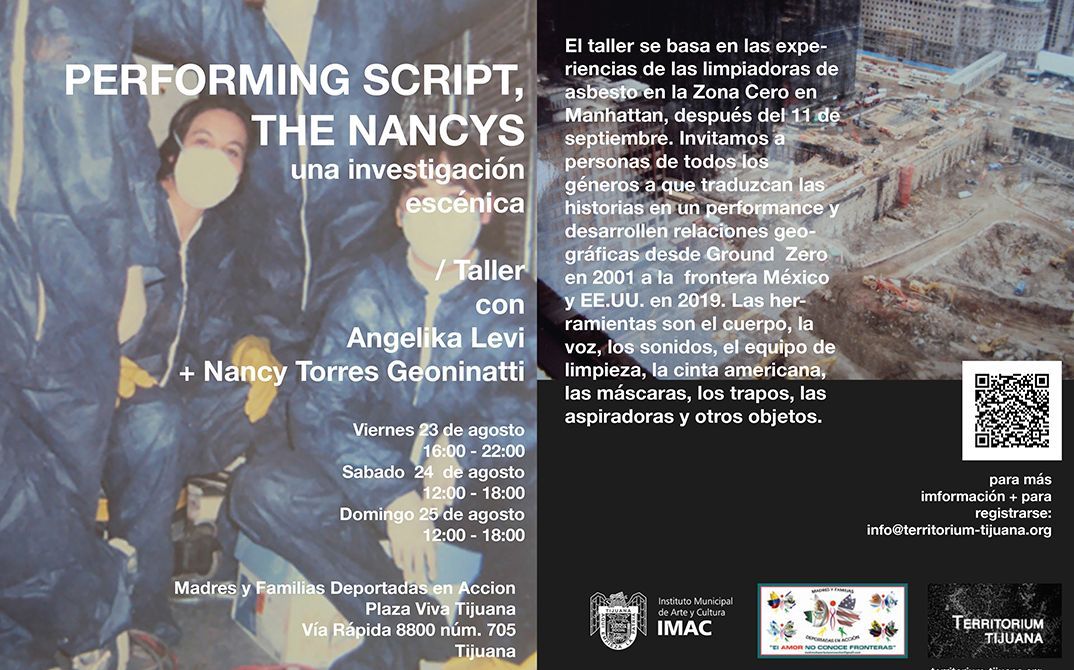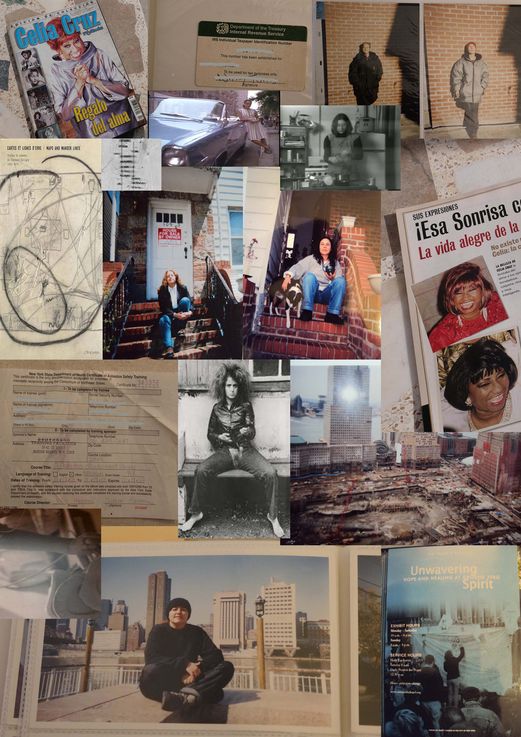Performing Script
Performing Script (1) took place as part of the exhibition Territorium Tijuana (2) in August 2019 in Tijuana, Mexico. We received support from the organizations Madres y Familias Deportadas en Acción and the Border Line Crisis Help Center (3),in whose spaces the interior shots were also filmed. The three-day workshop was based on texts taken from audio recordings made in 2001 by Nan Torres Geoninatti and Nancy Jancovich, two Argentine asbestos workers in New York.
I wanted to link the current situation at the border between Mexico and the USA with Nan and Nancy’s memories, by now 20 years old, and find out how the two time periods might be simultaneously narrated on film.
Nan and I wrote the performance concept in Los Angeles. We were inspired by a new reprint of the magazine Women’s Work, which was published in 1975 by Alison Knowles and Annea Lockwood, and which brought together performance scores by a variety of women artists. I was very intrigued by Pauline Oliveros’s performance instructions, although they were actually conceived for a college or university setting.
We formed three groups, one of the which was: “guards of sound and image.” Each group had its accessories and its tasks. The “guards” did the camera, sound, and played musical instruments. During the performance they wore luchadores masks (Mexican wrestling masks). The anonymization was a kind of protection for the performers, while at the same time we were citing the Lucha movies, a Mexican b-movie genre from the ‘50s, in which the masked heroes battled against criminals, mummies, zombies, vampires, and other evil forces.
We staged some scenes amidst the everyday reality near the PedWest border crossing in Tijuana Norte, under the watchful eye of the border police and the cartel, in front of the workers on their way to the maquiladoras (the low-paid factories of multinational corporations at the border to the USA), surrounded by Evangelical Christians, strolling tourists, and merchants pushing their wares over the bridge. Our tools were bodies, voices, camera, sound, vacuum cleaner, mops, overalls, tape, plastic gloves, face masks, the masks of some famous luchadores, American flags and medals of honor, trumpets, and drums.
Collage
I assembled the collage in 2017 in conjunction with the long film THE NANCYS, which I had been working on since 2014. It shows a part of my research, the need to clear my head of the dominant discourse and the visual media archive of 9/11 that was running in a loop, and to use feminist methods to acknowledge the perpetuation of suppressed history. The film’s narrative strategy is in part oriented on Donna Haraway’s concept of the speculative fabulation: “storytelling and fact telling; it is the patterning of possible worlds and possible times, material-semiotic worlds, gone, here, and yet to come.”(4)
The collage consists of photos and personal documents from Nan and Nancy during their time in New York, stills from feminist films, a photo by Valie Export, a newspaper about the life of the Queen of Salsa, and drawings by Fernand Deligny.
Angelika Levi

